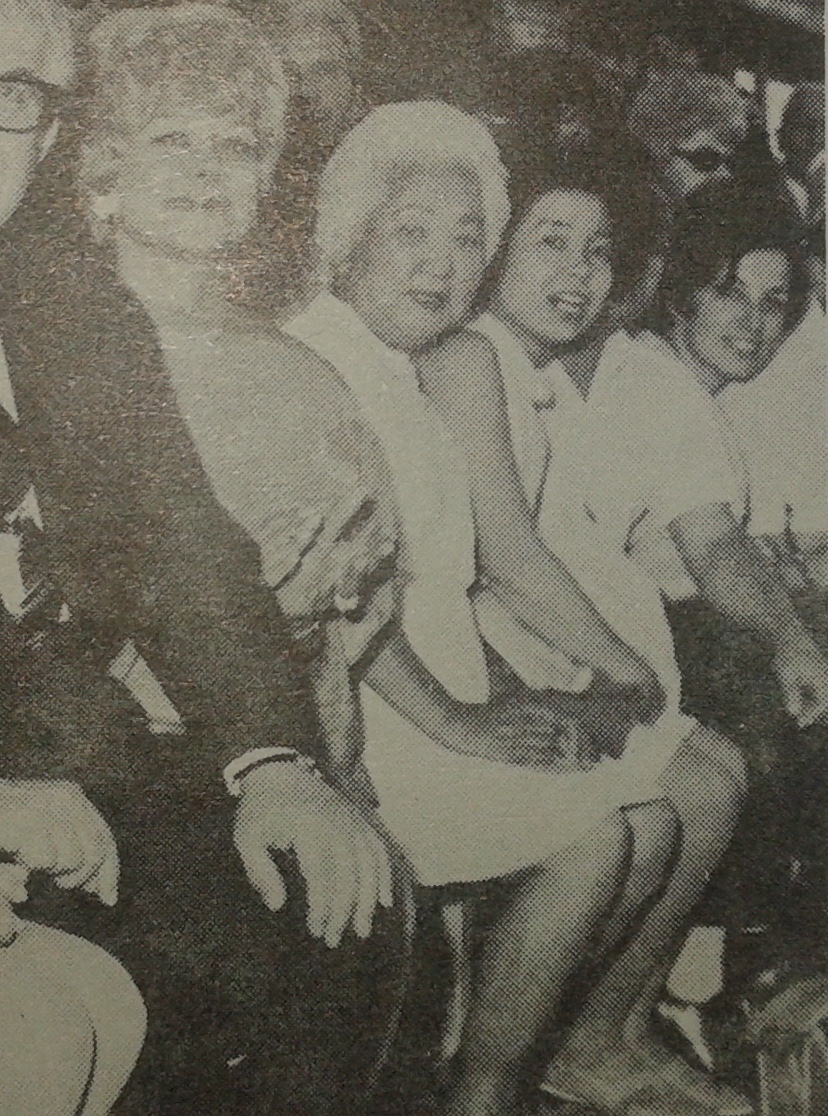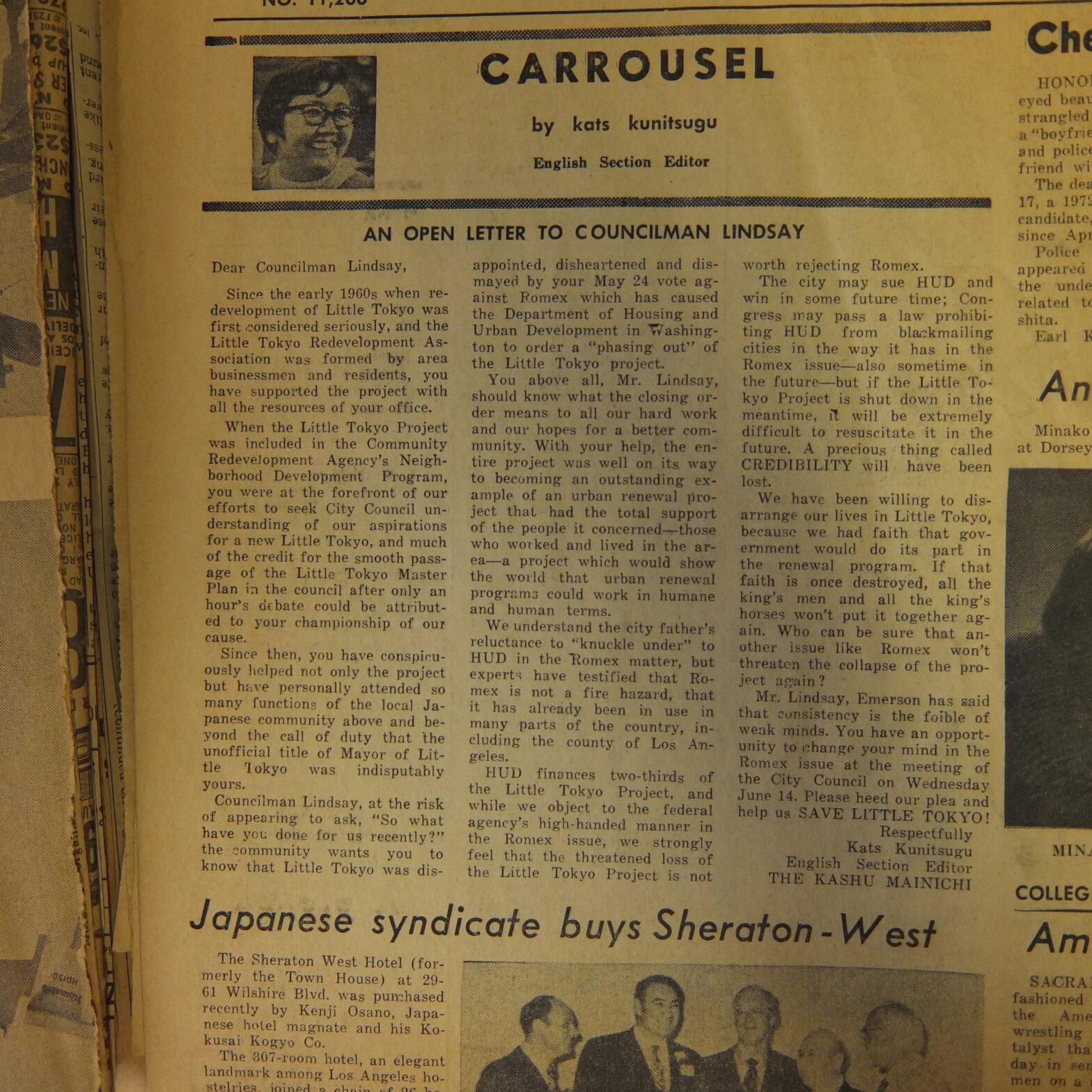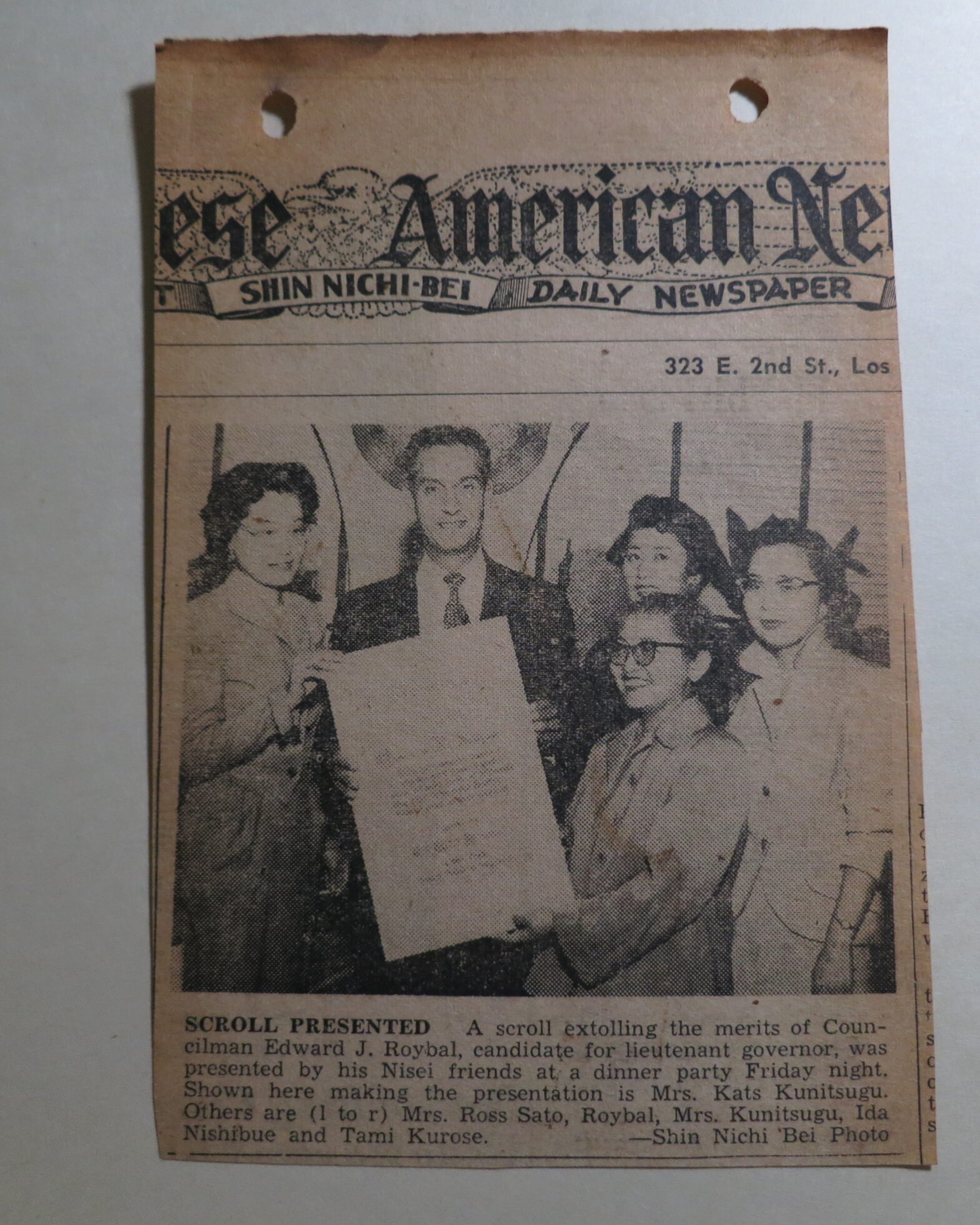Month: November 2017
-
L.A. History: A Mexican Perspective
Link: A Legendarily Censored Chicana Mural Finds Itself Shielded From View Once Again I don’t understand how this mural is “controversial” or “negative”. There’s nothing on there that hasn’t been seen in some TV public affairs programming from the 1970s or 1980s. It’s just what people call LA history. (I don’t even understand how it’s …
-

More Little Tokyo Redevelopment, 1969
I went to visit my mother, and she had this old copy of the Nisei Week 1969 program. She was in it! She, my grandma, and I were in a photo. You couldn’t see me, because I was swaddled in a blanket. They weren’t even captioned, because it was a photo of someone else. Anyway,…
-

Little Tokyo Urban Renewal 1972, Urban Renewal Researcher from Japan 1968, Gentrification Notes
I’ve been going through the hoard and stumbled on a couple unrelated things that, today, seem related. Gentrification has swept across downtown LA, and it recalls, for some people older than I, Urban Renewal. Urban Renewal was criticized and mocked as really “Negro Removal”. These photos show a couple articles and a letter that all…
-

Kats Kunitsugu in the Kashu Mainichi
I came across this column, and read it, and was moved. I searched for a clipping (shown above) that I was selling, of Kats Kunitsugu giving something to Ed Roybal to support his run for Lt. Governor in 1954. It was gone. I couldn’t find it. It was some East LA history there, and I…